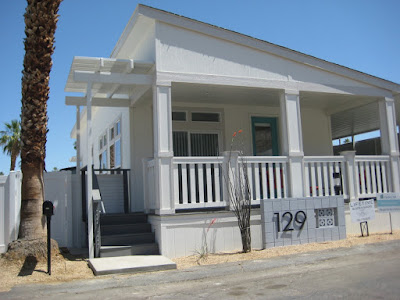I tell
my friends who are not familiar with this area that there are three things to
remember about real estate here: First, this is California real estate, secondly,
this is Southern California real estate, and finally this is Palm Springs real
estate. If you understand anything about the housing market, you could probably
guess that California housing is an entirely different kind of animal.
The
new tax reform law, if fully realized, will mean that California (as one of the
states with already high taxes) may have its state and local tax deductions
eliminated. If that happens, then homeowners will have to live in their homes
for five out of the previous eight years in order to take advantage of capital
tax gains exclusion.
In
addition, studies have shown that the millennials’ demand for a new type of
neighborhood has led to the emergence of ‘Urban Suburbs.’ Those are defined as
high-density neighborhoods in suburban areas that share a number of urban
qualities such as walkability and nearby amenities such as shopping,
restaurants, etc.
While
locally homes sold fast in 2017, with 25% of homes selling in two weeks or less
during the buying seasons peak, it is expected that homes in the Coachella
Valley will sell even faster in 2018. Even though price growth is expected to
continue and other factors such as ‘urban suburbs’ and the vacation rental
market are still wild cards in terms of their effect on the marketplace, one
developer has created a whole new twist on a very old housing concept.
Creating
new housing designs that complement their surroundings is nothing new for Palm
Springs. Beginning in the mid-40s, architects originated a design movement
specific to the greater Palm Springs area. It became known as Desert Modern.
Their buildings featured ground-breaking techniques such as post-and-beam
supports, floor-to-ceiling glass walls and a wide array of colors to match the
surrounding mountains and desert. One developer’s new solution lies in a
century old model that has been around for ages…the mobile home.
The Palm Canyon Mobile Club was
originally built in the early 1960s. The location was ideal-close to shopping,
restaurants & bars, and offered its residents some of the best mountains
views around. The park was one of the rare few to allow all ages, not
just seniors.
In late 2016, the master lease for
the park was purchased, and the ground lease was extended 65 years, which
provided security for the park's future. Now the developers are bringing a new vision
to the Palm Springs Mobile Club with their own version of the tiny home.
The
developer’s idea was to take your standard mobile home park and turn it into a
desert enclave of tiny homes. They’ve taken the old reliable double-wide mobile
home and turned one half of it into a tiny home. Of course, being Palm Springs
it couldn’t be just any half of a double-wide. The developer and designers have
used the cantilevered roofline as an architectural statement and designed
amenities that both complement and enhance the main structure.
With
nine foot ceilings throughout, plus clerestory windows and sliding glass doors,
the homes are flooded with natural light. There are one and two bedroom homes,
ranging in size from 600 to 900 feet. It’s single level living with full sized
appliances and room for a washer and dryer. There are some private fenced
yards, a lot of outdoor decks and select front porches.
The center of the community is
"The Club," featuring a newly remodeled clubhouse; updated resort
style pool area that includes an outdoor fire pit and lounge areas, plus
barbecue area. A workout room, pool table, plus updated poolside bathrooms and
sitting areas are part of the clubhouse features.
It may take some time to see if
this new housing concept takes hold and portends more radical changes to mobile
home parks throughout the Coachella Valley. Palm Springs has always had a wide
variety of housing from single-family homes, duplexes, condominiums, cooperative
housing, senior housing, mobile home parks, apartments, vacation rental properties,
and VBROs.
Now tiny homes are edging their way
into the marketplace. It will be interesting to see if they take hold and how
price appreciation compares to other types of housing.















No comments:
Post a Comment